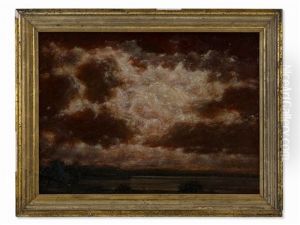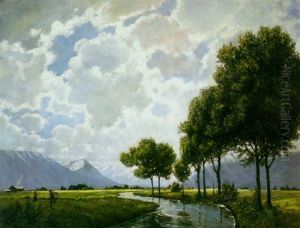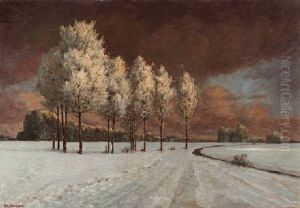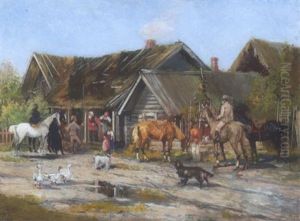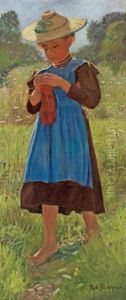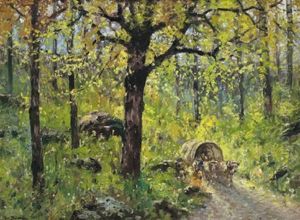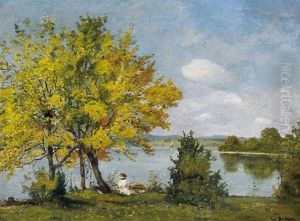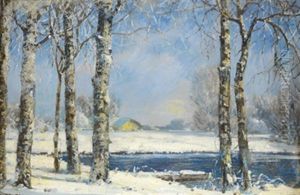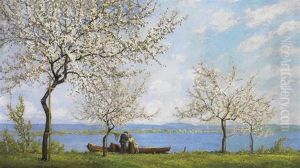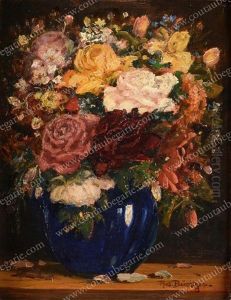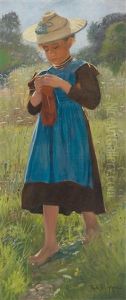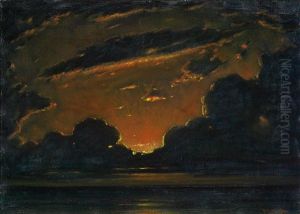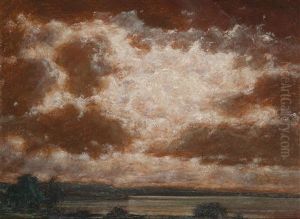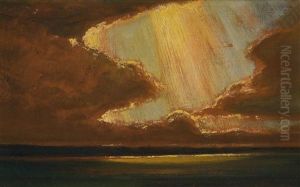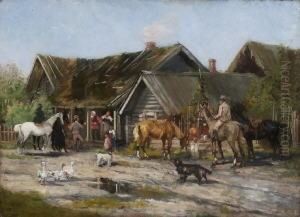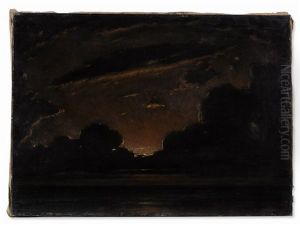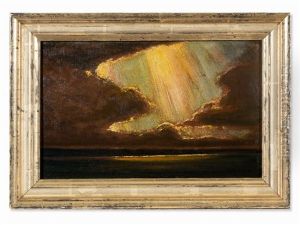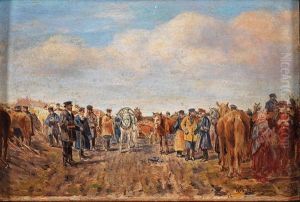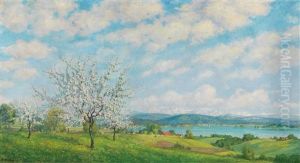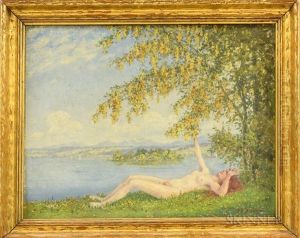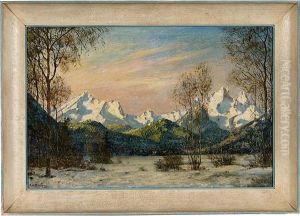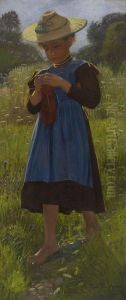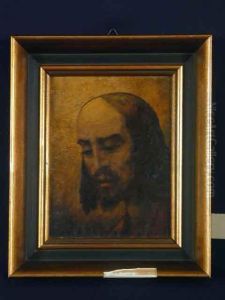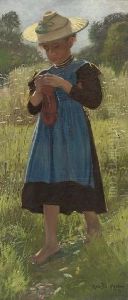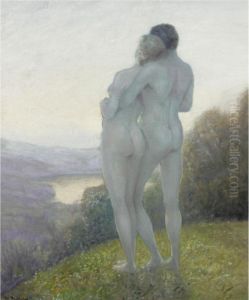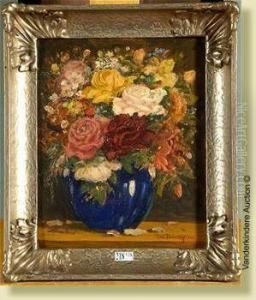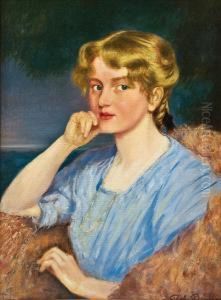Robert Buchtger Paintings
Robert Buchtger was born in 1821 in Prague, which was then part of the Austrian Empire and is now the capital of the Czech Republic. His early life and education are not extensively documented, but it is known that he developed an interest in the arts at a young age. Buchtger's work and contributions are often overshadowed by his more famous contemporaries, making detailed aspects of his biography somewhat elusive. Despite this, he is recognized for his contributions to 19th-century European art, particularly in the realms of painting and illustration.
Throughout his career, Buchtger was influenced by the major artistic movements of his time, including Romanticism and early Realism. These influences are evident in his use of vivid color, attention to detail, and the emotional depth of his subjects. He was adept at capturing the spirit of his era, focusing on both the natural beauty of landscapes and the complexities of human emotion and social interaction. While primarily known for his work in painting and illustration, Buchtger was also involved in the decorative arts, contributing to the design of textiles and wallpaper, reflecting the broader artistic trends of the 19th century that blurred the lines between fine art and decorative craftsmanship.
Despite the lack of widespread recognition, Buchtger's works were appreciated in art circles of his time, and he participated in several exhibitions. His legacy is preserved in the collections of regional museums and in private collections throughout Europe. Robert Buchtger passed away in 1896, leaving behind a body of work that continues to be studied by art historians interested in the diverse artistic expressions of the 19th century. His contributions, though less known than those of his peers, offer valuable insights into the cultural and artistic transitions of his time.
